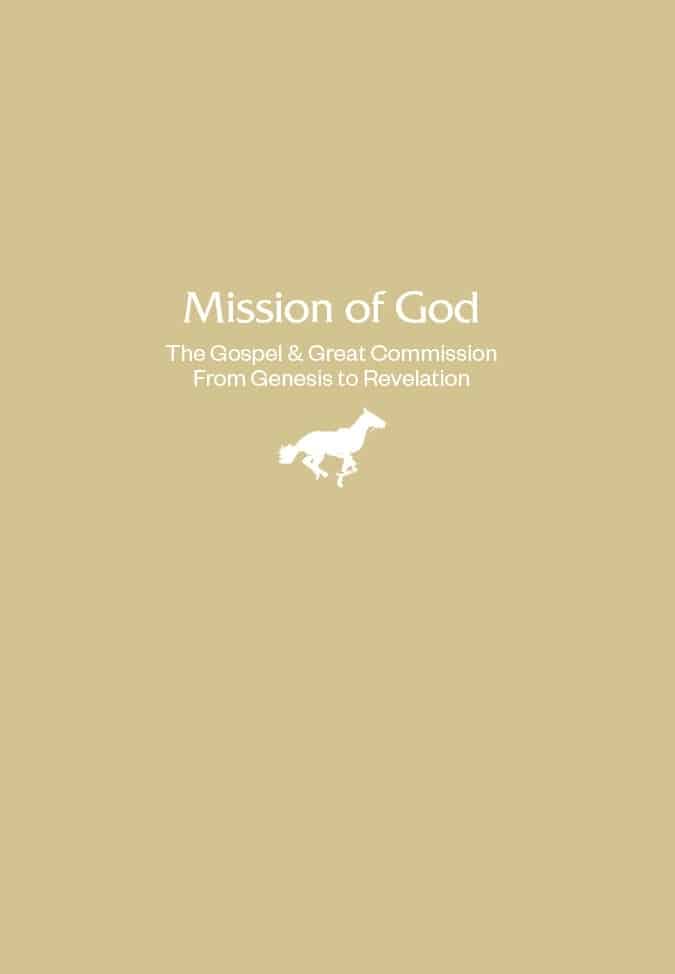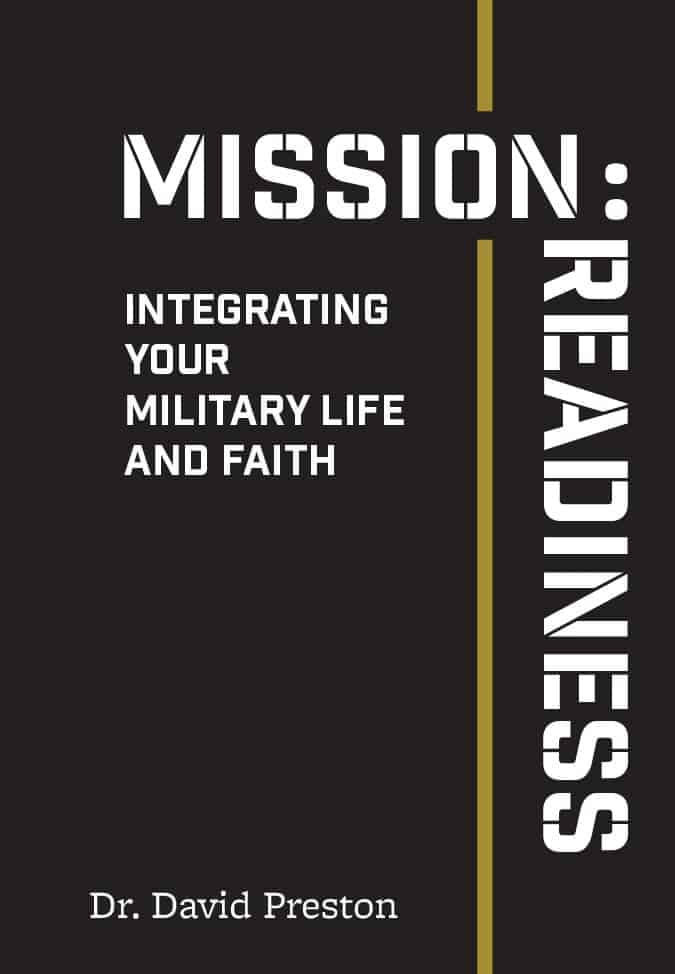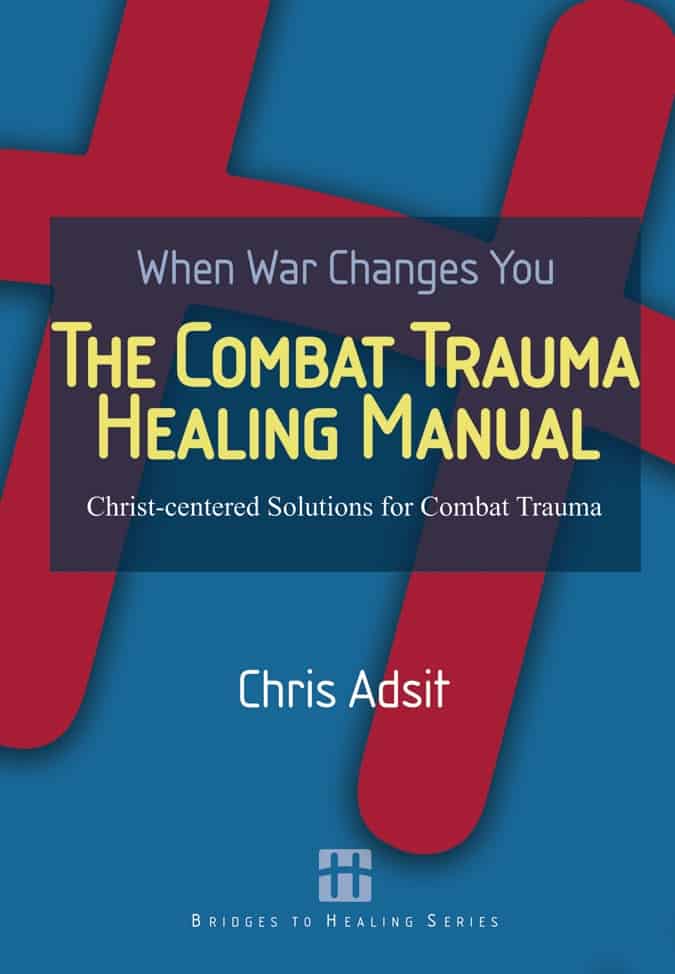The Role of Community in Discipleship

America today is a nation of individuals, and this impacts the way we live, think and believe.
This worldview deeply affects our faith, for individualism is an understanding of the world that has as its epicenter the individual soul. In other words, for Americans the most important thing is the individual, not the community, which is perhaps why Mother Teresa referred to America as the most socially impoverished country in the world. She could see no visible community.
There is nothing inherently wrong with individualism. But like all worldviews, individualism impacts our relationship with God, in both good and bad ways. American Christians correctly understand the importance of a relationship with God being personal, and that growth comes through personal study, prayer and worship. But our individualism can blind us to the importance of a community, leaving us lonely and disconnected from one another.
We see the impact of this lack of community every day. The family has broken down. Neighbors see each other only when they take out the garbage. Kids only play during play dates scheduled by grown ups, or during organized soccer or t-ball.
Surprisingly, the technology we hoped would have connected us, has left us even more detached: instead of visiting in person with friends, we call on our cell phones while driving somewhere; instead of writing letters or talking, we email or send instant messages. We are more accessible, but less interconnected. As a result, we live in a world of many acquaintances, but few deep relationships.
This individualistic mindset profoundly impacts how Christians approach discipleship. Churches and ministries often define discipleship as hierarchical systems of one-on-one meeting times, where a more spiritually mature person meets regularly with a less mature person to help mentor the disciple in growth and development.
I am not saying that individual discipleship doesn’t have its place, but as I look at the Bible, I see a pattern for growth that is even more powerful and effective than just one-on-one meetings. The picture I see is a village, an interconnected community.
The village is a place where groups of believers freely involve themselves in each other’s lives, and challenge each other to take those next steps of faith. The village includes believers both mature and young, mentors and peers, and is a place where the lost are welcome to join. The village is a home with an open door where your presence matters, where truth goes forth with grace, and where friends together pursue Christ-likeness.
Now I must admit I am a little biased toward this idea of a village. As a student many years ago, God allowed me to experience true biblical community, through a group of close-knit friends who were challenge me constantly in my relationship with Christ. To this day I keep in touch with many of these friends (I even married one of them).
While there were many godly individuals who discipled me, the biblical ideals I learned from them were fleshed out through countless interactions in my village of dear friends. I feel we need more of this: to get back to this ideal or to forge ahead to find it. In reclaiming this vision we’ll begin with what the Bible has to say about this idea of a village.
<strong>A Biblical Overview Of Community And Discipleship</strong>
Let’s begin with a basic definition of our village. A community is a place where believers connect with each other on a soul level and in doing so, spur each other on to a deeper relationship with God. A community is more than just individual friendships; it is an atmosphere of deep relationships, a synergistic place where friends connect in grace and truth. In such a community, believers can authentically challenge each other through words and deeds toward being like Christ.
Another word for this atmosphere of relationships is interconnectedness which has its foundation in the very nature of God: the Trinity. God the Father, God the Son, and God the Holy Spirit eternally subsist as one God in three persons, forever relating and loving one another. In creating us in His image God has put this communal need in the soul of every person.
Look at the story of humanity’s creation. “Let us make men in our image, after our likeness” (Genesis 1:26). People were created with an inner need to connect with each other. God makes this clear about Adam. “It is not good that the man should be alone” (Genesis 2:18).
This human need brings out one of the tragedies of the Fall. Sin broke our community with God (Genesis 3:8), and it devastated our ability to build community with one another. What happened at the Garden? Adam and Eve shifted blame (Genesis 3:12-13), their sons Cain and Abel quarreled, and brother killed brother (Genesis 4:5- 8): a graphic picture of how sin hinders our ability to create true community.
Despite the impact of sin, the Bible relates that God’s redemption of our falleness always involves the building, or rebuilding, of communities as places of growth. The nation of Israel serves as an example of a community and its impact.
The people worshiped together as a community (Deuteronomy. 26-27). They celebrated holy days as a community, such as Passover in Exodus 12-13 and Yom Kippur in Leviticus 16. God promised blessings if they obeyed God and curses if they did not (Deuteronomy. 28).
To help foster interconnectedness, Moses organized the people of Israel first by tribe, then by family (Numbers 26). The community was held responsible for Achan’s sin, and his entire clan paid the price (Joshua 7:24). We’ll stop at Joshua, but suffice it to say that God structured Israel’s entire society around the idea of an interconnected community.
The New Testament expands the concept of community even further. Jesus demonstrated the value of interconnectedness with His disciples. Seldom did Jesus spend time with just one disciple. He spent significant time with the multitudes, with the twelve, or with three, or even by Himself to pray and be with the Father. Even in Jesus’ most significant moments, such as the Transfiguration and the Garden of Gethsemane, Jesus brought with Him not one, but several disciples.
This was the model of interconnectedness that the apostles brought into the early church. At Pentecost “there were added that day about 3,000 souls” (Acts 2:41).” Now one thing is clear – with 3,000 new believers the apostles could not have individually meet with each person on a regular basis. Very few ministries today could accommodate such rapid growth.
So how did they do it? The story in Acts provides a few clues. “They were continually devoting themselves to the apostles’ teaching, and to fellowship, to the breaking of bread and to prayer” (Acts 2:42). Few (if any) buildings in ancient Jerusalem could house 3,000 people. So these new believers must have spent time together in smaller communities. The apostles most likely traveled from house to house, from community to community teaching the Word.
The communities themselves must have contributed greatly to the growth of new believers: “Everyone kept feeling a sense of awe... and all those who believed were together, and had all things in common” (Acts 2:43-44). No structure could accommodate such supernatural growth. Only a village of authentic believers could disciple the early church.
So how did the apostle Paul disciple the many new believers around him? He traveled with groups of disciples. When Paul went on his missionary adventures, people came with him: Barnabas, Luke, Titus, Timothy were all among those who traveled with him.
Just look at the beginning of many of his letters. He often mentions the names of others that had been with him. Even his personal letters to Titus and Timothy were not just for individuals, for they were collected and made available to the church at large. While Paul may have spent individual time with men such as Titus or Timothy, he clearly invested his time to create a community of disciples. It takes a village to make a disciple.
<strong>The Impact Of Community Discipleship</strong>
In order to comprehend the relationship between community and discipleship, let’s first clarify what we mean. Discipleship is the process where believers help one another become better followers of Christ. Let’s look at the impact a village plays in developing disciples.
First, community helps bring the Word of God alive and make it real.
No one disputes that God‘s Word is essential for personal growth. Prior to the Reformation, the Word of God was spoken in communities to the detriment of the individual’s spiritual growth. However, the pendulum has swung perhaps too far in the other direction. Our primary focus today is the study and meditation of the individual in some form of quiet time or personal devotion. While individual times in the Word are important, believers should not neglect processing God’s Word together in the village.
From the beginning, God wanted His Word to play a vital role through community. After Moses wrote the Law, he commanded the people every seven years to “read this law before all Israel in their hearing” (Deuteronomy 31:10). Why did they emphasize reading as a community instead of individually? Moses wanted Israel to “hear and learn to fear the Lord your God, and be careful to do all the words of this law, and that their children who have not known it may hear and fear the Lord” (Deuteronomy 4:12-13).
Throughout the Old Testament, when Israel neglected this command, God brought revival through the reading of His Word. Look at the examples of Josiah in 2 Chronicles 34:29-33 and Nehemiah in Nehemiah 9. The New Testament also shows a focus on community times of teaching the Scriptures (Acts 2:42, Acts 19:9, etc.). Paul exhorted Timothy to “devote yourself to the public reading of Scripture” (1 Timothy 4:13). The Bible shows clearly the impact of God’s Word read and taught in communities.
Like many Christians, I grew up thinking the sole key to my spiritual growth came through spending individual time reading the Bible. I struggled to read it every day, but did not fully understand or apply what I read.
When I started college, I began attending a Bible study led by a fellow student. It was an amazing time. Through the group, God’s Word ceased being archaic stories and began to come alive. Together we read, discussed, and applied God’s Word. I heard insights I never would have noticed through my own limited study and understanding. Together we processed and made applications into our lives. The village helps make disciples by helping God’s Word come alive in the context of community.
A second way discipleship occurs in community is through prayer.
Once again, individual prayer is absolutely vital. Jesus often withdrew to pray alone. However, it is not enough, for prayer ignites in the context of community. Throughout the Bible, prayer in communities of God’s people often brought about significant life change.
For example, Joshua along with the elders of Israel (a community of leadership) together sought God’s favor after the sin of Achan (Joshua 7:6). The book of Judges shows a pattern of God’s people sinning, then corporately crying out to God. Only then does God bring forth a judge who restores His people and brings revival.
Jesus often modeled the value of community prayer (Matthew 18:19-20). Perhaps the clearest New Testament example comes in Acts 4. After Peter and John’s arrest and release, the early church met together to pray. “They lifted their voices together to God” (Acts 4:24).
Together they asked God to give them boldness, and God answered dramatically. “When they had prayed, the place in which they were gathered together was shaken, and they were all filled with the Holy Spirit and continued to speak the word of God with boldness” (Acts 4:31). Prayer ignites in the context of community.
I remember the first time I experienced the power of community prayer. I came to college believing that prayer was a personal obligation. A friend in my dorm challenged several of us to meet to pray. Every night we met for half an hour to pray, and to my surprise praying with friends wasn’t boring. We prayed diligently for each other, for our needs, and for our concerns. We prayed for friends to come to Christ, for our parents, and for our futures.
Our non-Christian friends began to notice what we were doing, and sometimes joined us. We began to see God move. Friends came to Christ. Our faith began to grow. Our relationships deepened. Praying together actually encouraged us to pray more as individuals. Prayer ignites in the context of community.
Christians usually view the third area of discipleship, evangelism, as an event for individuals.
However, evangelism too explodes in the context of community. The early church understood this power, for as a community they preached the gospel with boldness, and people responded. “The Lord added to their number day by day those who were being saved” (Acts 2:47).
Paul commended the Thessalonian church saying, “not only has the word of the Lord sounded forth from you in Macedonia and Achaia, but your faith in God has gone forth everywhere” (1 Thessalonians 1:8). Evangelism explodes in the context of community.
Evangelism can be contagious. It is far easier to share your faith while surrounded by others who share their faith. I once led a group of student leaders who together embraced the need to reach the lost. These young men had a desire to see every student in their area of campus hear about Christ, and together they began talking with their neighbors about Jesus.
Each week they would share stories over dinner about the conversations they had about Christ. We would rejoice over new believers, pray for lost students we had met, and all of us would leave more motivated to talk with others about our Savior. We became a community that shared our faith. Evangelism explodes in the context of community.
A fourth aspect of discipleship is character growth.
The village is a powerful place where life change can occur in many ways. Community can impact character growth by spurring on group revival. God can inspire people as a group to seek changed lives (2 Chronicles 34, Nehemiah 9, Jonah 3). The community challenges individuals to seek after God, transforming the entire community.
Community can also be helpful in correction and reconciling relationships. Jesus challenged His followers to involve several others, or even the entire church to win over a brother who “sinned against you” (Matthew 18:13-17). God can also use individuals known in a community to help encourage Christlike behavior.
For example, the death of Ananias and Sapphira reminded their entire fellowship of the need for holiness and integrity (Acts 5:1-11). A true community can also embrace individuals in need of correction, for a group of people can have significant influence in the life of an individual. A great example is how Aquila and Priscilla gently corrected Apollos, making him more useful for the gospel (Acts 18:24-28).
The village also can play a significant role in helping individuals see victory over sin. James challenges believers to “confess your sins to one another, and pray for one another that you may be healed” (James 5:16). There is healing power in confessing our sins to caring friends.
While these character issues should also come to light in individual friendships, a loving community can more effectively embrace a struggling believer. “We who are strong have an obligation to bear with the failings of those who are weak, and not to please ourselves. Let each of us please his neighbor for his good, to build him up” (Romans 15:1-2). True character change happens best in community.
<strong>Applications Of Discipleship In Community</strong>
So how can we build a village? Let me conclude with some user-friendly ideas from the frontlines of campus ministry in developing a disciple-making community.
Before we begin with practical suggestions, we must first recognize that community involves a mindset that impacts every aspect of ministry. True community is not another ministry activity that we do, rather, community is the context in which all of ministry activities take place. Many ministries focus heavily on the relationship between the leader and individuals.
Instead, we need to create a series of interconnected relationships independent of the leader, which pull the person closer to the community and to Christ. The immediate picture that comes to mind is that of my family. Lisa and I are the proud parents of ten children, and our kids enjoy a tremendous amount of interconnectedness between them (independent of mom and dad). As a result, we have a family identity, a sense of what it means to be a Nieman.
Before a ministry can make changes to strengthen community, they must first change their mindset to recognize the central role that the village plays in disciple-making. That said, here are some practical suggestions that have flowed out of this emphasis in our ministry. This is not a step-by-step manual and can be contextualized for your ministry context.
First, I would recommend that any ministry, whether on campus or in the church, create a form of community groups. These are more than just one-hour weekly Bible study events. These are open groups of people dedicated to learning together about God.
Studying and discussing the Scripture is still important, and still happens weekly but a true community group goes beyond discussing the Bible. Community groups pray for each other, talk about life together, reach out to their lost friends, and provide true friendship. Together they challenge each other to walk more closely with God.
A second way to develop community discipleship is to give each person a specific role. If you are building a true community, why should the leader do everything? One member could bring snacks, another organize outreaches, while a third could focus on prayer.
Giving people responsibility creates ownership, develops leadership, and builds an environment for growth and. I should also note that community groups can share some natural affinity. It could be men in the same fraternity, women on the same floor of a dorm, or members of ROTC or a marching band. This helps build community more naturally, as the group lives life together.
Third, develop mature leaders who can create these disciple-making villages. One of the biggest mistakes ministries can make is failing to develop their leaders. Leaders need to experience community among themselves, to know how to foster community among those they lead.
At the University of Michigan, we bring our leaders together two hours a week for Family Night. The first hour we share what God is doing, pray, worship, and give vision and training. The second hour we break into smaller leadership groups, look into the Scriptures and create a more intimate forum for growth. We want these leaders to first experience together the interconnectedness we want them to build in the community groups they lead.
Fourth, parties and other social events play a large role in building community. Most ministries attempt to bring people together socially, because shared experiences enhance community. I would suggest building a community team of students to help strategically plan these social events.
There are many examples of parties that help build a sense of family. Here in the Midwest, our culture offers a great example—a barn dance. We hire a square dance caller, rent a barn, get some cider, apples and donuts, and have fun. People come as strangers, and often leave as new friends. That is the heart of community.
Community groups can also intentionally put together social events that build deeper relationships. A few years ago, a gifted leader struggled with getting students to attend his group—until he invited them to go canoeing. Another great memory maker can be inviting a community group of the opposite gender on some form of group date.
A fifth idea unique to the university environment involves building a class identity. In campus ministry, this need is essential for freshmen who typically come to campus knowing very few people. Building a freshmen class identity is vital because these freshmen will be your leaders in two years.
One simple way to develop class community at the outset is to invite the freshmen in your ministry over for dinner. A home is a warm, inviting environment. In a home you eat real food. In a home everyone knows your name, takes your coat, and asks how your day has been. Homes are where the family comes together. Jesus knew the value of a meal in building community.
Social events are not the only way to build class identity. Three years ago a group of about 20 freshmen went to Ground Zero after 9/11. Through this overnight ministry trip they bonded deeply. Today they comprise one of the strongest senior classes we have ever had.
We also hold meetings for each class (not just freshmen) at our fall retreat. We have a sophomore lead the freshman time, a junior lead the sophomore time, a senior lead the junior time, and one of our staff lead the senior time. The idea of a class identity is a powerful tool for campus ministries in building a village.
But perhaps the most important thing is for leaders to model true community themselves. They need to take the lead and initiate praying with others and sharing their faith. Leaders need to model vulnerability and authenticity. They need to resolve conflict with one another in positive ways, curbing petty disputes and personality conflicts, and modeling true community to those they lead.
In conclusion, the Bible shows that the idea of a village is a powerful platform for discipleship. These communities help followers of Christ grow in their understanding and application of the Word, in prayer, in sharing their faith with others, and in true character growth. As ministries, we need to be more focused on building communities, not just Bible studies. This is what occurred in my life. That’s why I’m in ministry today.















